Results 6,931 to 6,940 of 12096
Thread: Anandtech News
-
05-06-17, 02:30 PM #6931
Anandtech: VAIO Launches Phone A: Snapdragon 617, 3 GB RAM, 5.5” FHD, Android
VAIO has launched its new Google Android-based smartphone in Japan. The VAIO Phone A handset uses the same hardware platform as the company’s VAIO Phone Biz launched last year, but uses Google's more popular operating system. VAIO is selling the Cortex-A53 based mid-range phone for less than $250, which is very low for a phone made of machined aluminum.
VAIO, the former PC division of Sony and now an independent PC vendor from Japan, entered the smartphone market with its VAIO Phone Biz handset about a year ago targeting primarily business users. Since VAIO’s PCs run Windows 10, it was logical for the company to launch a Windows 10 Mobile-based handset supporting the Continuum technology and all the features that Microsoft’s platform has to offer. Apart from the OS, the key selling point of the VAIO Phone Biz was its aluminum unibody, which promised to be very durable. VAIO has never commented on just how well the Phone Biz has sold over its lifetime, but a year after the release of the product VAIO is re-launching it with Google Android.
Just like VAIO’s first smartphone, the Phone A (VPA 0511 S) is powered by the Qualcomm Snapdragon 617 system-on-chip (eight ARM Cortex-A53 cores clocked at 1.50 GHz, Adreno 405 graphics core) and features a 5.5” FHD display. The handset comes equipped with 3 GB of LPDDR3 memory, 16 GB of NAND flash storage (and a microSD card slot for expansion), 13 MP rear and 5 MP front cameras, 802.11a/b/g/n/ac Wi-Fi, Bluetooth 4.0, a micro USB 2.0 connector, various sensors, a 2800 mAh battery, and so on. Just like its Windows 10-based brother, the new unit also supports two SIM cards (a nano SIM and a micro SIM) and is compatible with 3G/LTE bands 1, 3, 6, 8, 11, 19 and 21 with carrier aggregation (so, not suitable for the U.S.). Finally, the weight and thickness of the product remained the same as before: 8.3 mm and 167 grams.
Despite the fact that the Snapdragon 617 is supported by Android 7, VAIO ships its Phone A with vanilla Android 6.0. It is unknown whether the company plans to update the OS eventually, but right now, the handset looks a bit outdated in terms of both hardware and software.
Computers and phones supplied by VAIO are developed by the company’s engineers and are made by various contract manufacturers. Meanwhile, the final quality checks and assembly of the hardware is performed at the Nagano Technology Site (Azumino City, Nagano Prefecture), the former hub of Sony’s PC operations. Due to that and materials used, VAIO has a reason to claim that its products feature a higher quality than competing offerings from its rivals, which is especially true when it comes to inexpensive Android handsets.
The VAIO Phone A is now available from the company’s online store exclusively in Japan; though like the Phone Biz, this phone is likely to show make its way to foreign third-party retailers as well. The company charges ¥26,784 ($237) per unit, which is uncommonly cheap for a smartphone featuring a durable, machined aluminum unibody, even taking the hardware and software into consideration. On the other hand, given the cutthroat competition on the Android market, a low price point is a way to drive sales.
Sources: VAIO, K-Tai Watch.
Related Reading:
- VAIO to Start Selling Smartphones in Japan
- Xiaomi Announces the Redmi Note 4 in India
- Nokia 6 Announced: Qualcomm Snapdragon 430, 5.5-Inch Display, Android 7
- ZTE Announces Blade V8 Pro with Snapdragon 625, Hawkeye Phone
More...
-
05-08-17, 06:31 AM #6932
Anandtech: Acer Predator Z271UV Gaming Monitor: 1440p, 144-165Hz, G-Sync, Eye Trackin
Although we have already reported on the flagship Acer Predator X27 gaming monitor, an interesting model that isn't getting quite as much attention is the Predator Z271UV. By foregoing the X27's more premium features like 4K resolution and HDR, this new model is being positioned as a more wallet-friendly option for the serious gaming crowd.
The Predator Z271UV is a 27-inch model with a WQHD resolution of 2560 × 1440 and an 1800R curve that should help provide a wider field of view. It features a TN panel with 400 nits brightness, 1000:1 contrast ratio, and viewing angles of 170°/170°. The 8-bit panel can display 16.7 million colors, and uses a quantum dot film in order to support 130% of the sRGB and 95% of the DCI-P3 color gamuts. The TN panel on this model is rated to a response time as low as 1ms (3ms native), while the refresh rate can be overclocked from the default 144 Hz all the way up to 165 Hz (the fact that the monitor isn't sold as 165 Hz suggests that your mileage may vary). When you combine those figures with the built-in NVIDIA G-Sync or ULMB (Ultra-Low Motion Blur) technologies, this is a gaming monitor that is being promoted as having no problems with motion blur, stuttering or tearing.
This Predator Z271UV also includes Tobii eye-tracking hardware, which uses infrared light to track your head movements and where your eyes are looking on the screen. Designed to complement a keyboard and mouse, one of the uses is that you can pan around a digital world without having to use the mouse, kind of like with a virtual reality headset. There are apparently 100 game titles that support eye tracking technology. Further catering to gamers are additions like Predator GameView, which allows users to make precise color and dark level adjustments that can be saved to three different profiles, and which can be easily switched between at any time during gameplay. There are also vendor features like Acer VisionCare with Flickerless, BluelightShield, ComfyView and low dimming technologies that are intended to reduce eye fatigue during extended gaming sessions.
This model also has what Acer describes as a ZeroFrame design, which is a thin bezel that should improve the viewing experience for those planning a multi-monitor setup. The stand was designed with ergonomics in mind, and it can tilt the display between -5 to 25 degrees, swivel +/- 30 degrees, and provide height adjustments of up to 4.7 inches (120mm). There are also two 7-watt speakers with Acer TrueHarmony technology built into the monitor.
When it comes to connectivity, the specs are little less clear. There is no indication as to the version of the HDMI input - which would likely indicate HDMI 1.4 - while the only other video connector is a DisplayPort 1.2 input. If this is accurate, only the DisplayPort would support the 165Hz refresh rate at the native resolution. The HDMI port would be limited to 60Hz. There is also a five port USB 3.0 hub (1 up, 4 down) and one audio out jack.Acer Predator Z271UV Panel 27-inch TN Native Resolution 2560 x 1440 (16:9) Maximum Refresh Rate 144 Hz Native
165 Hz OverclockedResponse Time 1 ms (GTG) Brightness 400 cd/m2 Contrast 1000:1 Viewing Angles 170º/170º Dynamic Refresh G-Sync (60? - 165 Hz) Pixel Density 109 PPI Display Colors 16.7 million Color Gamut Support sRGB: 130%
DCI-P3: 95%Stand Tilt (-5º to 25º)
Swivel (-30º to 30º)
Height (up to 4.7-inch/120mm)Inputs 1 x DisplayPort 1.2a
1 x HDMIUSB Hub 4 x USB 3.0
(1 x USB 3.0 Input)Audio 2 x 7W Speakers
Audio Out
The press release did not have any details regarding pricing, availability, or warranty.
Related Reading- Acer’s Announces Predator Gaming Displays with Tobii Eye-Tracking Technology
- ASUS Launches VG245Q 'Console' Gaming Monitor: 1080p with FreeSync, $200
- AOC Expands AGON Family with Curved AG322QCX and AG272FCX 144 Hz Displays
More...
-
05-08-17, 07:31 AM #6933
Anandtech: AT20 Giveaway Day 9: ASRock Gives Your Ryzen an X370 Taichi Motherboard
Welcome everyone to the start of the third week of our 20 day giveaway celebration of AnandTech’s 20th anniversary. We have a full schedule this week, so that means 9 more giveaways between now and Friday.
Kicking things off for the week is one of our long-time motherboard partners, ASRock. With AMD’s Ryzen CPUs selling so well – a welcome change for the battered AMD – Ryzen-compatible Socket AM4 motherboards are now in demand. So ASRock has sent over one of their X370 Taichi motherboards for us to give away to someone looking to complete their Ryzen system.
The AnandTech 20th Anniversary Celebration – ASRock Giveaway
ASRock X370 Taichi Motherboard
ASRock’s X370 Taichi is a full ATX board, giving it room for 3 PCIe x16 slots, and another 2 PCIe x1 slots. Along with the traditional form factor, the board also sports a duo of M.2 slots – one sporting SATA and PCIe 3, the other sporting purely PCIe 2. ASRock has also added several third-party controllers to the board, including an unnamed (but likely ASMedia) controller for USB 3.1 (Gen 2) support, an Intel I211AT controller for GigE networking, an Intel 802.11ac dual-band WiFi controller (on an includes M.2 stick), and a Realtek ALC 1220 for audio.
Rounding out the package, ASRock has equipped their board with their “steel slots” PCIe braces for two of the PCIe x16 slots to better support heavy video cards, along with a 16-phase power delivery system for the CPU. And while the board itself doesn’t sport RGB LEDs, it does include a pair of controlled headers for adding RGB lighting strips. Meanwhile on the software side of matters, the board uses ASRock’s latest-generation UEFI firmware, supporting features such as Instant Flash and Crashless BIOS.
Finally, as with our other giveaways, today’s giveaway is only open for 48 hours, so be sure to enter soon. However please note that for legal reasons, we’re only able to open these giveaways to residents of the United States.
Good luck to everyone! And be sure to check in this afternoon for our next giveaway.
More...
-
05-08-17, 08:37 AM #6934
Anandtech: Toshiba Demonstrates NVMe SSD With 64-Layer BiCS3 3D NAND
Toshiba's transition from planar NAND flash to 3D NAND flash memory has been a long, drawn-out process. Their BiCS 3D NAND architecture is on its third generation but has yet to have any significant impact on the SSD market. The first generation of BiCS 3D NAND was never mass produced. The second generation 256Gb 48-layer BiCS2 3D NAND has seen some use in memory cards and smartphones, but its only presence in the SSD market has been the BG series—a relatively low-volume OEM-only line of BGA SSDs. It's enough to prove that their 3D NAND isn't vaporware, but hasn't done anything to alleviate the ongoing global NAND shortage or push prices down. Toshiba's third generation 3D NAND is planned to be the one that finally displaces planar NAND, with a 512Gb 64-layer TLC part that should be able to beat the price/GB of Toshiba's 15nm planar TLC, and a smaller 256Gb part for lower-capacity applications like memory cards.
This week Toshiba is publicly demonstrating for the first time a SSD using their 64-layer BiCS3 3D NAND. At the Dell EMC World conference, Toshiba has a live demo of a laptop containing a prototype XG-series NVMe PCIe SSD with a total of 1TB of BiCS3 3D TLC NAND. Toshiba's XG3 series is the OEM counterpart to the OCZ RD400 consumer NVMe drives. Toshiba won't comment on how the XG prototype differs from the RD400 or XG3 aside from using 3D NAND, but the prototype probably offers an early look at what the next XG will feature when it is ready to be officially announced. The prototype is a model that is currently sampling to large OEMs and could be formally announced and in just a few months.
Toshiba has announced that they intend to migrate all of their SSD product lines to their 3D TLC NAND, starting with OEM and enterprise products before rolling out to the retail market. They are not willing to commit to a particular timeline for completing the transition, but we should see multiple models announced and shipping by the end of 2017. Supply will continue to be a concern as new 3D NAND fab capacity comes online in 2018, and that's when we might see the current flash memory shortage wrap up and SSD prices resume a healthy decline.
More...
-
05-08-17, 02:10 PM #6935
Anandtech: Acer ProDesigner BM320 32-inch 4K Monitor Launched: dE < 1 Guaranteed
While gaming monitors like the Predator X27 and Z271UV tend to get the most attention, there is still a significant market for work-oriented monitors that boast accurate color reproduction and a large work area. Those are two criteria that the new Acer ProDesigner BM320 has been designed to meet.
This 32-inch display has a native UHD resolution of 3840 x 2160 with a standard refresh rate of 60 Hz. It features an IPS panel with anti-glare coating, a peak brightness of 350 nits, wide viewing angles of 178°/178, and a 5ms response time. Contrast is listed as a comical marketing speak 100,000,000:1, which is the Acer Adaptive Contrast Management (ACM) figure.
Color reproduction and wide color gamut support is a key feature of this model, and it expands its range to include 100% of Adobe RGB, 100% of sRGB (plus 100% of Rec. 709), and 90% of DCI-P3 coverage. There is no explicit mention of a 10-bit panel, but support for 10-bit color is touted as a feature. The ProDesigner BM320 also comes factory calibrated and tested to ensure a DeltaE of 1.0 or less, which is near perfect color accuracy and better than almost all other claims of per-unit factory calibration, which typically gives dE < 3. Professionals will also have access to 6-axis color adjustment settings to create custom color profiles or simply to update the calibration as the monitor ages.
Given its professional positioning, the BM320 ships with Acer’s highly adjustable ErgoStand. The stand can tilt the display between -5 to 25 degrees, swivel +/- 45 degrees, pivot +/- 90 degrees, and provide height adjustments of up to 5.9 inches (150mm). The 90° of swivel rotation should not be overlooked since that means the display can be rotated into a vertical orientation. The ZeroFrame design results in this model having very thin screen bezels on three sides, which should help create near seamless multiple monitor setups.
Buy Acer ProDesigner BM320 on Amazon.comAcer ProDesigner BM320 Product Page Link Panel 32-inch IPS Native Resolution 3840 x 2160 (16:9) Maximum Refresh Rate 60 Hz Response Time 1 ms (GTG) Brightness 350 nit Contrast '100,000,000:1'
Using ACMViewing Angles 178º/178º Dynamic Refresh None Pixel Density 138 PPI Display Colors 1.07 billion
10-bit Support
10-bit Native?Color Gamut Support Adobe RGB: 100%
sRGB: 100%
Rec. 709: 100%
DCI-P3: 100%Stand Tilt (-5º to 25º)
Swivel (-45º to 45º)
Pivot (-90º to 90º)
Height (up to 5.9-inch / 150 mm)Inputs 1 x DisplayPort 1.2a
1 x Mini DisplayPort
1 x DVI
1 x HDMI 2.0USB Hub 4 x USB 3.0
(1 x USB 3.0 for hub)Audio 2 x 2W Price / MSRP $1299
Connectivity is listed as DVI, DisplayPort 1.2, Mini DisplayPort, and HDMI 2.0 video outputs. There is also a five port USB 3.0 hub (1 up, 4 down) and two integrated 2W stereo speakers.
The Acer ProDesigner BM320 is available now in the United States with an MSRP of $1299 and a three-year warranty. That is a high price tag for gaming enthusiasts, but not outside of the norm for a display aimed at creative professionals.
Gallery: Acer ProDesigner BM320 32-inch 4K Monitor Launched: dE < 1 Guaranteed



Related Reading- Pre-Orders for LG’s 32UD99 Display Available: 4K, DCI-P3, HDR10, FreeSync for $999
- Dell’s 32-inch 8K UP3218K Display Now For Sale: Check Your Wallet
- ASUS Designo Curve MX34VQ Incoming: 34" Ultrawide Curved Display with Qi Charging
More...
-
05-08-17, 02:10 PM #6936
Anandtech: AT20 Giveaway Day 9.5: Cooler Master Keyboards, Case, & a Liquid Cooler To
As Monday rolls along, taking us to our second giveaway of the day is Cooler Master. The case & cooling & peripherals firm has sent along a selection of prizes, including multiple keyboard sets, a 120mm closed loop liquid cooler, and a micro-ATX case. So there’s plenty of chances to win this afternoon.
- MasterKeys Lite L Keyboard & Mouse Combo Pack (#1)
- MasterKeys Lite L Keyboard & Mouse Combo Pack (#2)
- MasterKeys Pro L Mechanical Keyboard White
- MasterBox Lite 3 Micro-ATX Case
- MasterLiquid Lite 120mm CLLC
The AnandTech 20th Anniversary Celebration – Cooler Master Giveaway
MasterKeys Lite L Keyboard & Mouse Combo Pack
First off, we have a pair of Cooler Master’s MasterKeys Lite L Combo mouse & keyboard packs. The keyboard features a membrane switch variant that Cooler Master calls the “mem-chanical” switch, which is touted to offer more mechanical-like resistance, and which work with standard Cherry MX keycaps. Meanwhile the right-handed optical mouse is based around an AVAGO 3050 sensor and can switch between DPI settings on the fly. Finally, both peripherals feature RGB lighting, with both the keyboard and the mouse offering multiple zones.
MasterKeys Pro L Mechanical Keyboard
Along with the aforementioned combo packs, Cooler Master has also included a stand-alone mechanical keyboard, the MasterKeys Pro L. Based around Cherry’s MX switches, this keyboard augments its normal hardware with an additional 4 keys dedicated to profile loading. These profiles are in turn part of the keyboard’s programmable macro system, allowing for the quick programming and playback of keyboard macros. And of course, full RGB lighting is built-in, which in turn can be controlled by the aforementioned gaming profiles.
MasterBox Lite 3 Micro-ATX Case
Third up is our first micro-ATX case of the AT20 giveaway, Cooler Master’s MasterBox Lite 3. Just recently launched, the MasterBox 3 Lite can accept micro-ATX or mini-ITX boards, and is just under 15 inches tall. Cooler Master advertises the case as a spacious mATX case, as it’s capable of holding video cards up to 13.5 inches long.
The MasterBox Lite 3 comes with one 120mm rear fan pre-installed, and space for up to 2 more front intake fans. Meanwhile the case offers one 5.25 inch bay, a 3.5 inch bay, and a 2.5 inch bay for SSDs.
MasterLiquid Lite 120mm Closed Loop Liquid Cooler
Our final prize of the afternoon is a MasterLiquid Lite 120mm CLLC. The liquid cooler uses a dual-chamber design, dissipating heat via a standard thickness radiator, which is driven by a 120mm 66.7 CFM fan. The radiator itself does look a bit long, so be sure to check your measurements before installing, while the pump unit itself comes with adapters to work with all of the major sockets.
Finally, as with our other giveaways, today’s giveaway is only open for 48 hours, so be sure to enter soon. However please note that for legal reasons, we’re only able to open these giveaways to residents of the United States.
Good luck to everyone! And be sure to check in tomorrow for our next giveaway.
More...
-
05-08-17, 09:22 PM #6937
Anandtech: Qualcomm Announces Snapdragon 660 & 630 Mobile Platforms: Better Connectiv
Qualcomm is bringing some premium experiences to its mid-tier lineup with the addition of the Snapdragon 660 and Snapdragon 630 Mobile Platforms. Improved connectivity, enhanced imaging, faster charging, and even machine learning features, in addition to the usual CPU and GPU improvements, help make these 600-series parts particularly interesting.
Qualcomm has been aggressively pushing more advanced LTE modems throughout its product portfolio recently, giving at least some of the SoCs in the 600 and even 400 tiers a minimum of Category 7 LTE performance (300Mbps DL / 100Mbps UL) with a Snapdragon X8 LTE modem. But after the debut of Qualcomm’s first gigabit LTE modem—the Snapdragon X16 (1.0Gbps DL / 150Mbps UL)—in the Snapdragon 835 SoC this year, along with its successor the Snapdragon X20 (1.2Gbps DL / 150Mbps UL), Qualcomm is ready to bring even higher performance to its new 600-series platforms. Both the Snapdragon 660 and Snapdragon 630 get the same Snapdragon X12 LTE modem that appeared in last year’s flagship Snapdragon 820/821 SoCs. This is a Category 12/13 modem capable of up to 600Mbps throughput on the downlink (3x20MHz CA, 256-QAM) and 150Mbps on the uplink (2x20MHz CA, 64-QAM).
Both the Snapdragon 660 and 630 platforms also support Qualcomm’s suite of RF front-end components too, including TruSignal adaptive antenna tuning with carrier aggregation, which dynamically optimizes signal quality to deliver better voice and data, and envelope tracking technology, which improves battery life and lowers skin temperature by improving power amplifier efficiency. There’s also support for high-power user equipment (HPUE) that helps extend network coverage, and is currently being used by Sprint.
Another shared component between the Snapdragon 660 and 630 is the Spectra 160 ISP. While a step down in processing performance from the Spectra 180 ISP in Snapdragon 835, it still supports many of the same features, including hybrid autofocus systems, dual photodiode phase-detect autofocus (2PDAF), better electronic image stabilization for video, and enhanced low-light processing for still images. It can also handle dual-camera setups with Qualcomm’s smooth “optical zoom” feature when using two cameras with different focal lengths. It can also integrate data from both cameras to produce bokeh effects or to improve image quality.Qualcomm Snapdragon Upper Mid-Range SoCs SoC Snapdragon 650
(MSM8956)Snapdragon 652
(MSM8976)Snapdragon 653
(MSM8976 Pro)Snapdragon 660 CPU 2x Cortex-A72 @ 1.80GHz
4x Cortex-A53 @ 1.44GHz4x Cortex-A72 @ 1.80GHz
4x Cortex-A53 @ 1.44GHz4x Cortex-A72 @ 1.95GHz
4x Cortex-A53 @ 1.44GHz4x Kryo 260 Performance
@ 2.2GHz
4x Kryo 260 Efficiency
@ 1.8GHzGPU Adreno 510 Adreno 512 DSP Hexagon DSP
All-Ways Aware HubHexagon 680 DSP
All-Ways Aware HubISP/
CameraDual ISP
21MPDual 14-bit Spectra 160 ISP
24MPMemory 2x 32-bit @ 933MHz
LPDDR3
14.9GB/s2x 32-bit @ 1866MHz
LPDDR4
29.9GB/sIntegrated Modem Snapdragon X8 LTE
(Category 7)
DL = 300Mbps
2x20MHz CA, 64-QAM
UL = 100Mbps
2x20MHz CA, 16-QAMSnapdragon X9 LTE
(Category 7/13)
DL = 300Mbps
2x20MHz CA, 64-QAM
UL = 150Mbps
2x20MHz CA, 64-QAMSnapdragon X12 LTE
(Category 12/13)
DL = 600Mbps
3x20MHz CA, 256-QAM
UL = 150Mbps
2x20MHz CA, 64-QAMEncode/
Decode2160p30, 1080p120
H.264 & H.2652160p30, 1080p120
H.264 & H.265Mfc. Process 28nm HPm 14nm LPP
Another advanced feature supported by the Snapdragon 660 and 630 is Qualcomm’s Quick Charge 4 fast-charging technology, which was previously only available with Snapdragon 835. Quick Charge 4 promises up to 20% faster charging and 30% higher efficiency than the previous generation Quick Charge 3.
The Snapdragon 660, which is a replacement for the Snapdragon 653, is now the highest performing SoC in the 600-series. Like the Kryo 280 in Snapdragon 835, the Snapdragon 660’s Kryo 260 CPU uses four semi-custom Cortex-A73 cores in the “performance” cluster and four semi-custom Cortex-A53 cores in the “efficiency” cluster in a big.LITTLE arrangement. The Kryo 260, however, does not hit the same peak frequencies as Kryo 280, and Kryo 260 uses 1MB/1MB of shared L2 per cluster instead of 2MB/1MB of L2 for Kryo 280. We’ve already seen how well Snapdragon 835 performs, and Snapdragon 660 should not be too far behind.
Alongside the Kryo 260 CPU is the Adreno 512 GPU that delivers up to 30% better performance on average than the Adreno 510 GPU in Snapdragon 653, according to Qualcomm. Some of the gain likely comes from a frequency increase (perhaps a lot of it), but it’s still a pretty significant jump, although it should still fall below the peak performance of the Adreno 530 GPU in Snapdragon 820. It supports the latest 3D graphics APIs, including Vulkan, and can power displays with up to 2560x1600 resolution.
Another significant addition to Snapdragon 660 is Qualcomm’s Hexagon 680 DSP, which made its debut last year in the Snapdragon 820 SoC and features Hexagon Vector eXtensions (HVX) specifically designed for advanced photo and video processing, virtual reality, and computer vision workloads. This DSP can work on two vector threads in parallel, each containing four 1024-bit SIMD pipelines (a typical ARM CPU core contains two 128-bit SIMD NEON vector pipelines for comparison), allowing each HVX context to work on 4,096 bits/cycle compared to 256 bits/cycle for a single CPU core. The Hexagon 680 also contains four threads for scalar instructions too, each with 4 VLIW pipelines. Using up to two scalar threads and two vector threads in parallel allows concurrent execution of audio and imaging tasks.
The Snapdragon 660 supports Qualcomm’s Snapdragon Neural Processing Engine SDK, along with TensorFlow and Halide frameworks on the Hexagon 680 DSP, bringing advanced machine learning and computer vision capabilities to the 600-tier for the first time.
The Snapdragon 630 SoC uses a familiar octa-core Cortex-A53 CPU configuration. Unlike the Snapdragon 625/626 that it replaces, the Snapdragon 630 has a more distinct big.LITTLE arrangement with four A53s running at up to 2.2GHz (the same as the S626) sharing a 1MB L2 cache and four more A53s only reaching up to 1.8GHz and sharing a smaller 512KB L2 cache. While there should not be much difference in CPU performance and power compared to the Snapdragon 626, the Snapdragon 630’s Adreno 508 GPU performs 30% better on average than the S626’s Adreno 506 GPU. It also supports Vulkan and all of the latest 3D graphics APIs at resolutions up to 1920x1200. The Hexagon 642 DSP still supports Qualcomm’s Snapdragon Neural Processing Engine SDK for machine learning and TensorFlow, but does not share the Hexagon Vector eXtensions (HVX) microarchitecture of the more powerful Hexagon 680 and 682 DSPs.Qualcomm Snapdragon Mid-Range SoCs SoC Snapdragon 615 / 616
(MSM8939)Snapdragon 617
(MSM8952)Snapdragon 625 / 626
(MSM8953 / MSM8953 Pro)Snapdragon 630 CPU 4x Cortex-A53 @ 1.70GHz
4x Cortex-A53 @ ?4x Cortex-A53 @ 1.50GHz
4x Cortex-A53 @ ?4x Cortex-A53 @ 2.00GHz / 2.20GHz
4x Cortex-A53 @ 2.00GHz / 2.20GHz4x Cortex-A53
@ 2.2GHz
4x Cortex-A53
@ 1.8GHzGPU Adreno 405 Adreno 506 Adreno 508 DSP Hexagon DSP Hexagon DSP
All-Ways Aware HubHexagon 642 DSP
All-Ways Aware HubISP/
Camera21MP Dual ISP
24MPDual 14-bit Spectra 160 ISP
24MPMemory 1x 32-bit @ 800MHz
LPDDR3
6.4GB/s1x 32-bit @ 933MHz
LPDDR3
7.46GB/s2x 16-bit @ 1333MHz
LPDDR4
10.66GB/sStorage eMMC 4.51 eMMC 5.1 eMMC 5.1 eMMC / UFS Integrated Modem Gobi 4G LTE / Snapdragon X5 LTE
(Category 4)
DL = 150Mbps
1x20MHz CA, 64-QAM
UL = 50Mbps
1x20MHz CA, 16-QAMSnapdragon X8 LTE
(Category 7)
DL = 300Mbps
2x20MHz CA, 64-QAM
UL = 100Mbps
2x20MHz CA, 16-QAMSnapdragon X9 LTE
(Category 7/13)
DL = 300Mbps
2x20MHz CA, 64-QAM
UL = 150Mbps
2x20MHz CA, 64-QAMSnapdragon X12 LTE
(Category 12/13)
DL = 600Mbps
3x20MHz CA, 256-QAM
UL = 150Mbps
2x20MHz CA, 64-QAMEncode/
Decode1080p30 H.264 / 1080p60
H.264 & H.2652160p30
H.264 & H.2652160p30, 1080p120
H.264 & H.265Mfc. Process 28nm LP 14nm LPP
Both of the new Snapdragon 660 and 630 platforms include features and capabilities previously seen only in the premium 800-tier, and also add new technologies like Bluetooth 5 and LPDDR4 RAM support (up to 8GB), which reduces power consumption and improves bandwidth compared to LPDDR3. The Snapdragon 660 sounds particularly compelling, because it appears to deliver a very similar experience to last year’s Snapdragon 820 but, presumably, at a lower price point.
The Snapdragon 660 and 630 platforms are pin and software compatible, and they both use the same 14nm LPP FinFET process from Samsung. The Snapdragon 660 is available to partners now and should appear in devices during the second quarter, while the Snapdragon 630 will become available at the end of May and is expected to appear in devices during the third quarter.
More...
-
05-09-17, 08:17 AM #6938
Anandtech: Previewing Maxiotek's MK8115 SSD Controller: Can DRAM-less Drives Make The
Maxiotek, the fabless SSD controller design group formerly part of JMicron, has released their first new controller since being spun off. The MK8115 is a DRAM-less SATA SSD controller intended for low-cost SSDs using 3D NAND. We tested 512GB engineering samples using both Micron's 3D MLC and 3D TLC.
More...
-
05-09-17, 09:43 AM #6939
Anandtech: AT20 Giveaway Day 10: Huawei Calls for Mate 9 and P10 Smartphones
Hey everyone, we’re back again for day 10 of our 20 day giveaway celebration of AnandTech’s 20th anniversary.
Starting us off this morning is Huawei. We haven’t had a phone giveaway in a couple of days now, so the rising Chinese smartphone manufacturer is supplying us with a set of their latest phones. Need something big? Then for that we have the Mate 9. Or something a bit more one-hand friendly? Then for that we have the recently launched P10.
- Huawei Mate 9 Smartphone
- Huawei P10 Smartphone
The AnandTech 20th Anniversary Celebration – Huawei Giveaway
Huawei Mate 9
Launched at the tail-end of last year, the Mate 9 is Huawei’s flagship phablet. With a 5.9 inch 1080p LCD display, the Mate 9 is a big deal. But not just for the screen: it’s also one of the first Huawei phones to feature subsidiary HiSilicon’s Kirin 960 SoC, a current-generation 16nm FinFET-built SoC that incorporates ARM’s latest Mali-G71 GPU and Cortex-A73 CPU. As a result the Mate 9 ends up being a very fast phone.
Rounding out the package is a 64GB of NAND and 4GB of RAM, along with a 12MP rear camera based on Sony’s IMX286 sensor and incorporating OIS and laser auto-focus. Meanwhile the phone’s modem is based on Huawei/HiSilicon’s own LTE modem design, which supports up to LTE Cat12. The phone itself is built around an aluminum unibody, which as Matt Humrick noted in our review of the phone, “gives it a stiff, solid feel that’s atypical for such a large phone.” And Huawei puts that volume to good use as well, filling the phone with a 4000 mAh (15.28 Wh) battery, giving the powerful phone some extra battery capacity to offset its capabilities.Huawei Mate 9 Specs SoC HiSilicon Kirin 960
4x Cortex-A53 @ 1.84GHz
4x Cortex-A73 @ 2.36GHz
ARM Mali-G71 MP8 @ 1037MHzDisplay 5.9-inch 1920x1080 IPS LCD Dimensions 156.9 x 78.9 x 7.9 mm
190 gramsRAM 4GB NAND 64GB
+ microSDBattery 4000 mAh (15.28 Wh)
non-replaceableFront Camera 8MP, 1/3.2" Sony IMX179 Exmor R, 1.4µm pixels, f/1.9, Contrast AF Rear Camera Color: 12MP, 1/2.9” Sony IMX286 Exmor RS, 1.25µm pixels, f/2.2, PDAF + Laser AF + Contrast AF + Depth, OIS, HDR, dual-tone LED flash
Monochrome: 20MP, f/2.2, dual-tone LED flashModem HiSilicon LTE (Integrated)
2G / 3G / 4G LTE (Category 12/13)SIM Size 2x NanoSIM (dual standby) (MHA-L29)
1x NanoSIM (MHA-L09)Wireless 802.11a/b/g/n/ac, BT 4.2 LE, NFC, IrLED, GPS/Glonass/Galileo/BDS Connectivity USB 2.0 Type-C, 3.5mm headset Sensors capacitive fingerprint, accelerometer, gyroscope, compass, ambient light, proximity, Hall effect, barometer
Huawei P10
The smaller counterpart to the Mate 9, the Huawei P10 incorporates much of the same hardware in a smaller body. We’re still looking at the Cortex-A73 equipped Kirin 960 SoC, only this time it’s now paired with a 5.1 inch 1080p LCD. The rest of the internal hardware includes 64GB of NAND and 4GB of RAM, and the SoC’s integrated LTE Cat12 modem.
The rear (color) camera is a 12MP f/2.2 design, based on Sony’s IMX286 sensor. Meanwhile the IPS LCD display is capable of covering almost the entire DCI-P3 gamut, which will be particularly useful once Android color management catches up. Powering the phone is a 3200 mAh battery.Huawei P10 Specs SoC HiSilicon Kirin 960 4x Cortex A73
4x Cortex A53
Mali-G71MP8RAM 4GB LPDDR4 NAND 64 GB Display 5.1"
1080p LCDModem LTE Cat 12 DL / Cat 11 UL Camera 20MP Monochrome
12MP RGB
F/2.2Front Facing Camera
8MP
F/1.9Battery 3200 mAh OS Android 7.1
with EMUI 5.1Connectivity 802.11a/b/g/n/ac 2.4 & 5GHz BT 4.2, USB-C, GPS/GNSS, DLNA SIM Size NanoSIM + NanoSIM (w/o microSD)
Finally, as with our other giveaways, today’s giveaway is only open for 48 hours, so be sure to enter soon. However please note that for legal reasons, we’re only able to open these giveaways to residents of the United States.
Good luck everyone! And be sure to check in tomorrow for our next giveaway.
More...
-
05-09-17, 01:35 PM #6940
Anandtech: AT20 Giveaway Day 10.5: G.Skill Trident Z RGB Memory & 780-Series Peripher
Closing out our giveaways for this Tuesday is G.Skill. The long-lived memory, storage, and peripheral manufacturer has sent over a trio of prizes from across their product lineup. The company’s core specialty is of course RAM, so we have two of their Trident Z RGB DDR4 kits: a 32GB (4x8GB) DDR4-3200 kit, and the even faster 32GB (4x8GB) DDR4-3600 kit. Meanwhile from their peripherals business, we have a complete 780-series mouse and keyboard set, containing a KM780 RGB keyboard and MX780 mouse.
- Trident Z RGB DDR4-3200 CL14 32GB (4x8GB) Kit
- Trident Z RGB DDR4-3600 CL16 32GB (4x8GB) Kit
- Ripjaws KM780 RGB Keyboard + Ripjaws MX780 Mouse
The AnandTech 20th Anniversary Celebration – G.Skill Giveaway
G.Skill Trident Z RGB DDR4 RAM
Starting things off, we have a duo of G.Skill’s flagship Trident Z RGB memory kits, the DDR4-3200 and the DDR4-3600. The DDR4-3200 kit runs at 14-14-14 timings, meanwhile the DDR4-3600 kit trades a bit of frequency for timings, bumping the latter up to 16-16-16. Both kits offer frequencies well over the DDR4 official spec, so unsurprisingly both require a little more voltage – 1.35v to be precise – to get there, with an XMP 2.0 profile to help motherboards dial in the right settings.
Meanwhile both kits are clad in G.Skill’s Trident Z RGB heatspreader. This black metal headspreader includes an exposed lightbar at the top of the memory, which in turn contains a full RGB color lighting solution, allowing the DIMMs to add some more color to a build.
G.Skill Ripjaws KM780 RGB Keyboard + Ripjaws MX780 Mouse
Our third G.Skill prize for the day is a mouse and keyboard combo pack containing the company’s Ripjaws KM780 RGB keyboard and Ripjaws MX780 mouse. The KM780 RGB keyboard is a fully mechanical keyboard using Cherry’s MX switches. Besides basic keyboard functionality, the board also includes several extra function keys (including a dedicated timer key!) and a USB 2.0 port for daisy-chaining a mouse. And as is common for high-end keyboards, G.Skill offers a macro command system. Finally, the keyboard offers extensive RGB lighting, with fully programmable per-key RGB backlighting.
Meanwhile the MX780 mouse is the natural counterpart to the KM780 keyboard. The aluminum-framed ambidextrous mouse is based around an Avago ADNS 9800 laser sensor, one of the higher-end sensors on the market today. The body of the mouse itself includes swappable side grips, 8 programmable buttons, and height + weight adjustment. Oh, and of course, RGB lighting courtesy of a 4 zone lighting system.
Finally, as with our other giveaways, today’s giveaway is only open for 48 hours, so be sure to enter soon. However please note that for legal reasons, we’re only able to open these giveaways to residents of the United States.
Good luck to everyone! And be sure to check in tomorrow for our next giveaway.
Gallery: AT20 Giveaway Day 10.5: G.Skill Trident Z RGB Memory & 780 Peripherals

More...
Thread Information
Users Browsing this Thread
There are currently 15 users browsing this thread. (0 members and 15 guests)




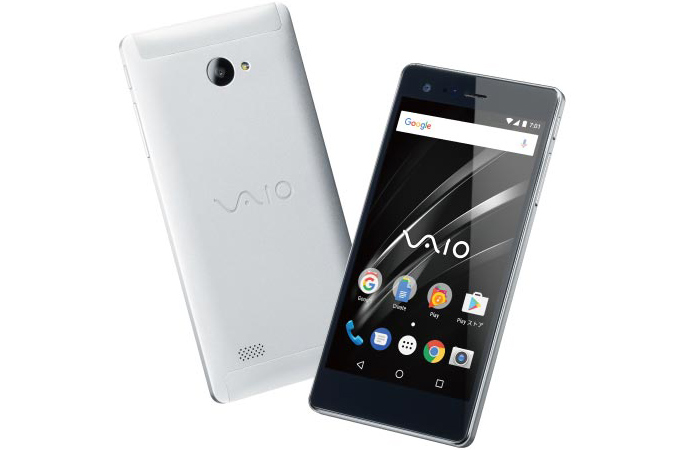
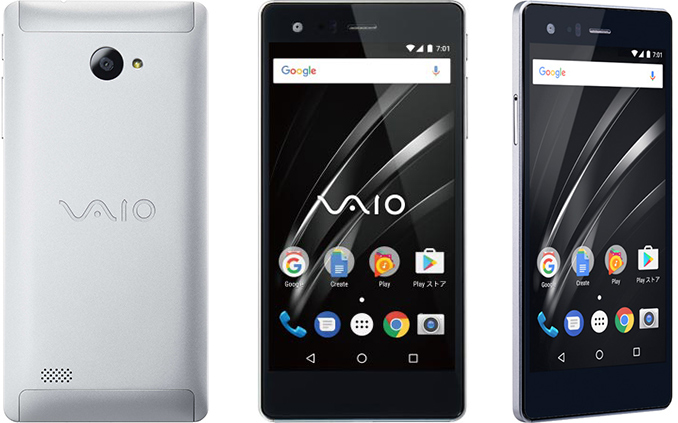


 Quote
Quote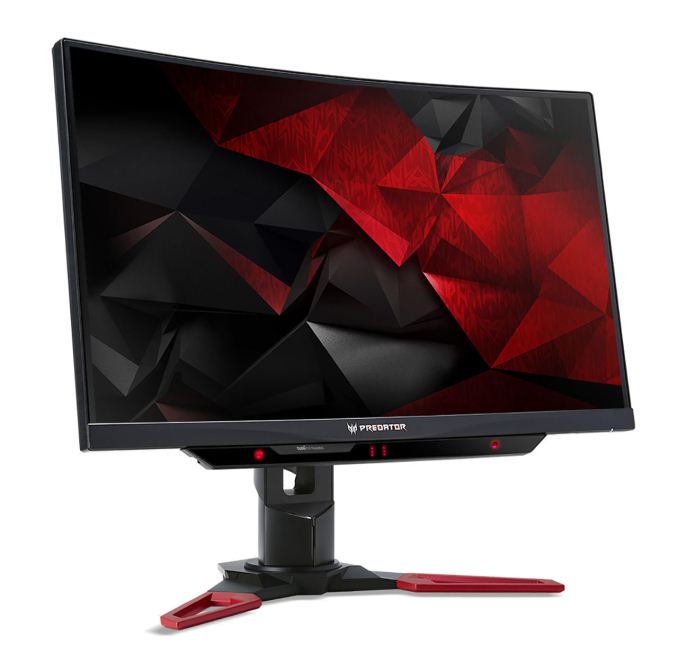

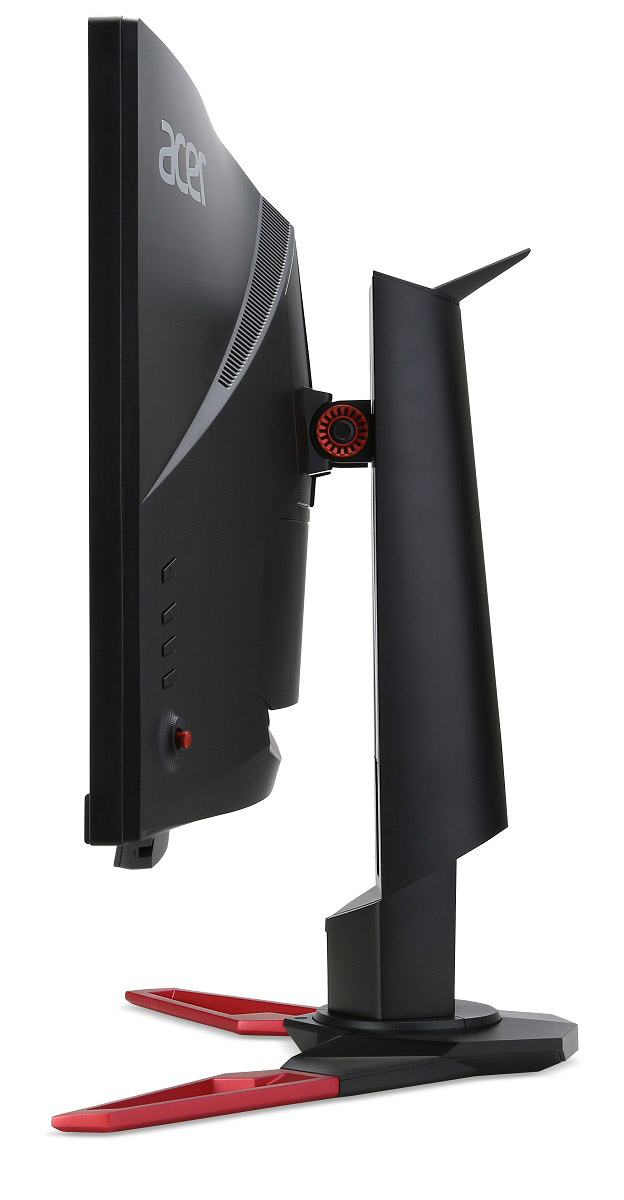




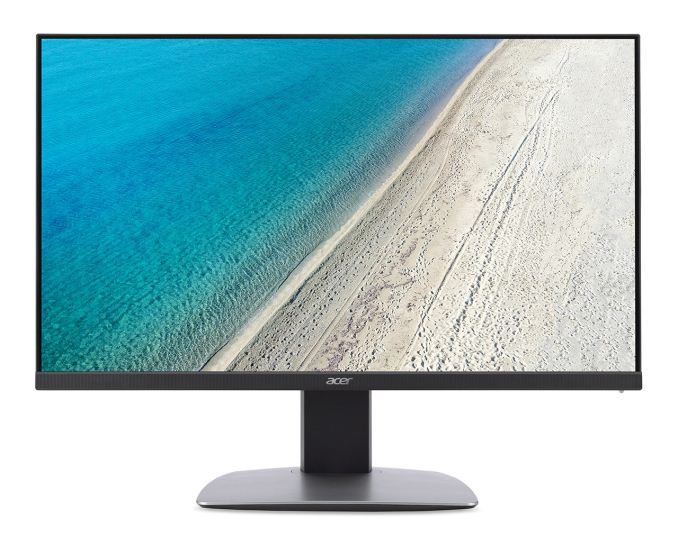
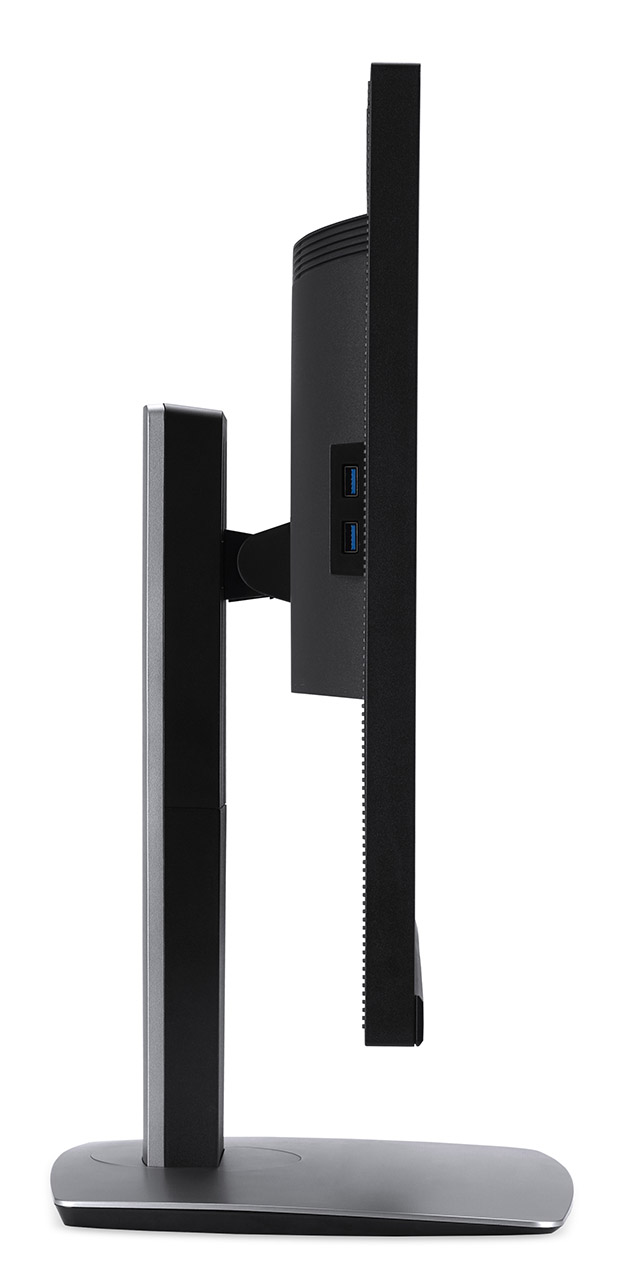
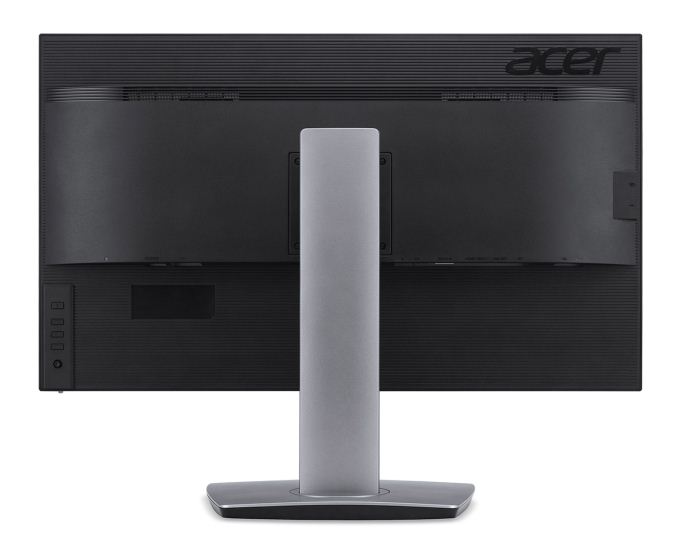
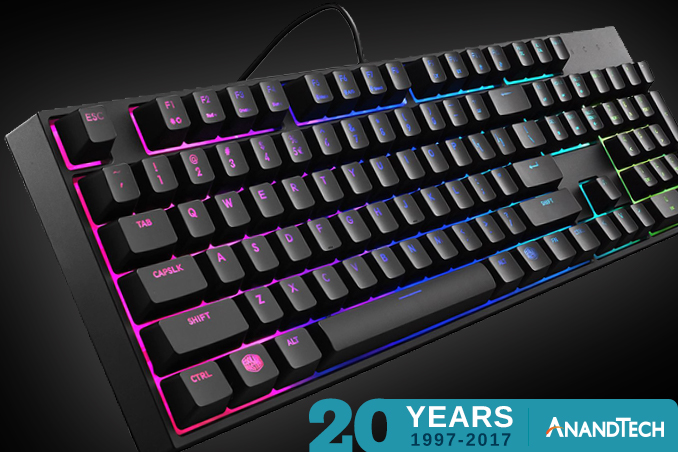






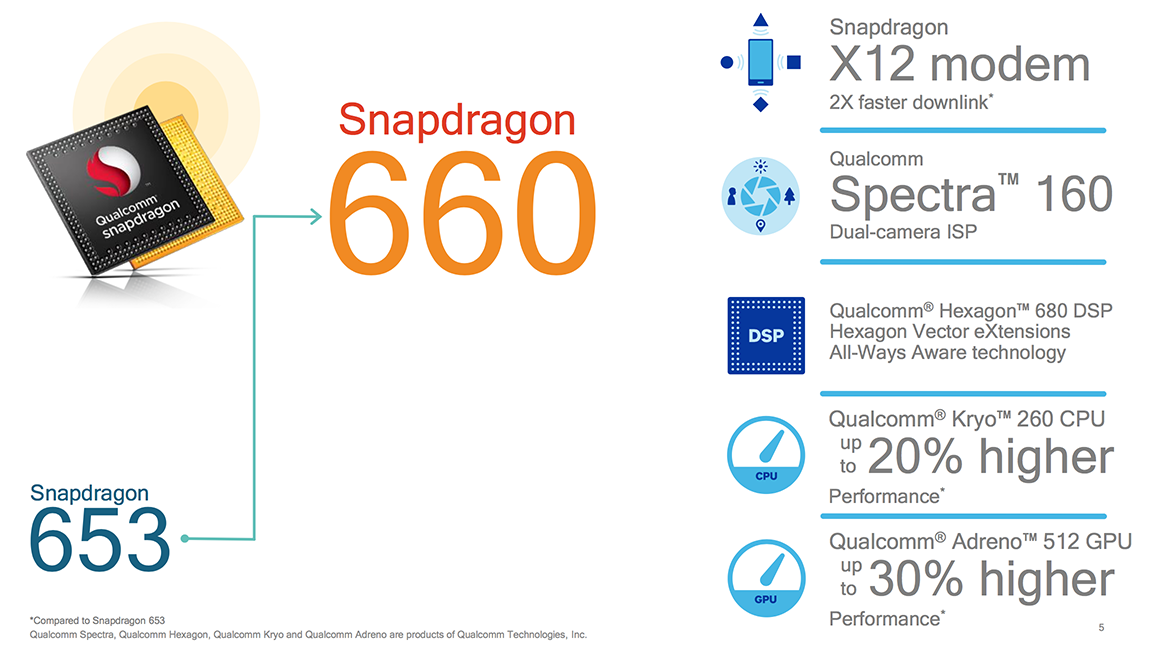
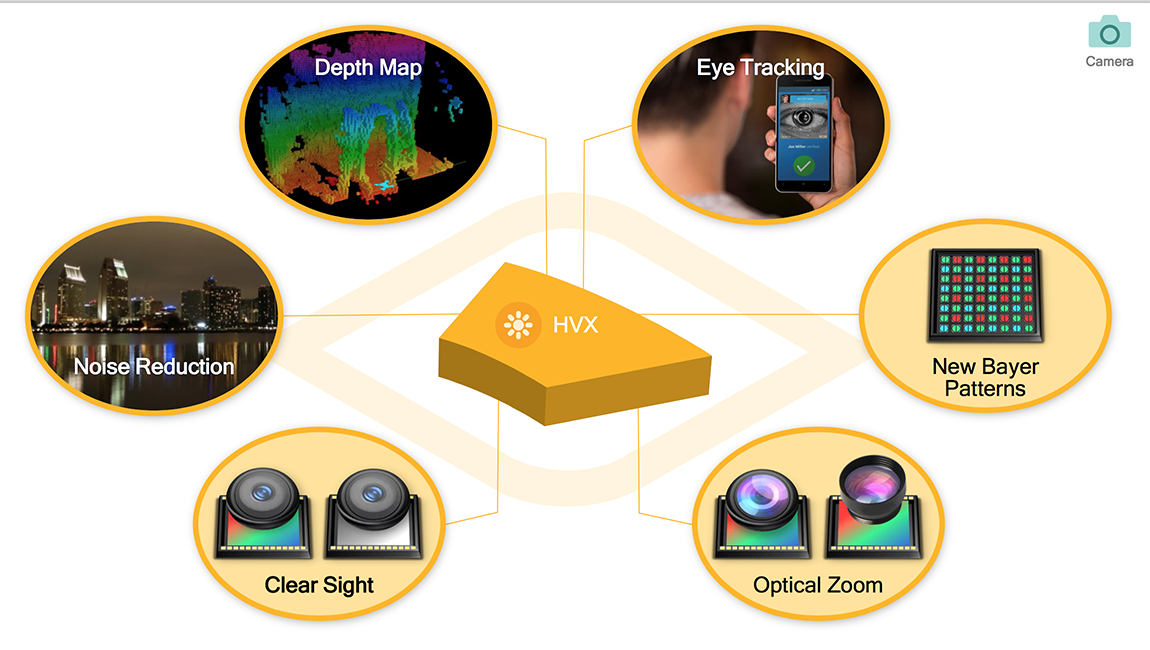
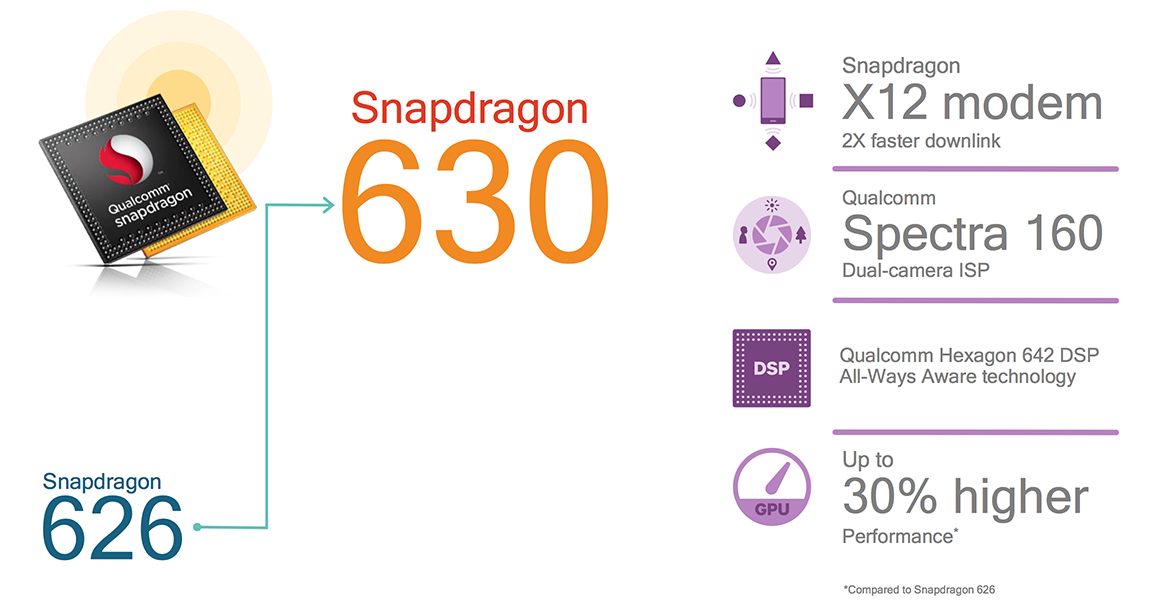



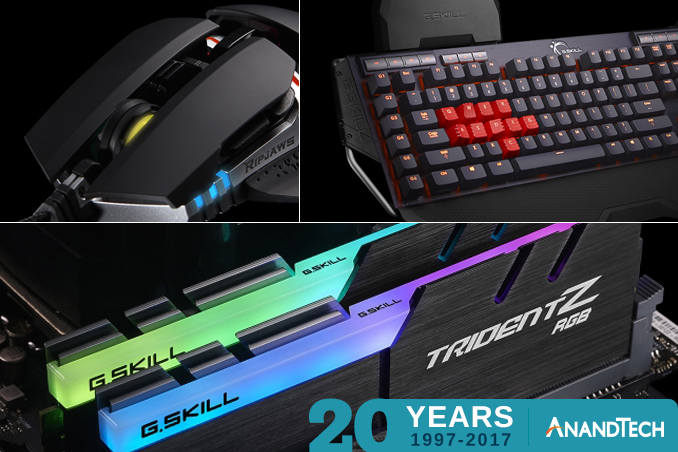



















Bookmarks